The present work deals with the role of military Special Forces in intelligence. Special Forces are involved in the data’s collection phase of the intelligence cycle, since they have advanced operative power. The current article is a brief analysis based on a short talk given during a Summer School on Intelligence Studies at King’s College London. Therefore, we aim to give just a partial introduction and not to present an extensive discussion. The paper offers a scientific and descriptive view, and it does not address evaluative or ethical issues.
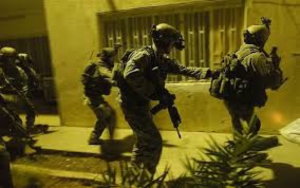 The following analysis is based on some recent wars cases, such as the Iraq or the Afghanistan ones, in which United States deployed special corps with clear intelligence-oriented tasks. First, we will consider what Special Forces (Spec-Forces) usually do or what people think they are doing. Second, we will show what their role in the intelligence cycle is, and how they act within a specific tactical process. Third, we will address some benefits and problems with respect to the recruitment of military Spec-Forces personnel for intelligence activities.
The following analysis is based on some recent wars cases, such as the Iraq or the Afghanistan ones, in which United States deployed special corps with clear intelligence-oriented tasks. First, we will consider what Special Forces (Spec-Forces) usually do or what people think they are doing. Second, we will show what their role in the intelligence cycle is, and how they act within a specific tactical process. Third, we will address some benefits and problems with respect to the recruitment of military Spec-Forces personnel for intelligence activities.
By taking into account the Joint Doctrine on Special Operations,[1] it is worth noticing that Special Forces’ duties entails a wide range of military activities. The operators may conduct either direct actions, which simply are offensive operations, or guerrilla actions, in the case in which the government supports an insurgent movement against an enemy. Moreover, operators may perform counterinsurgency actions, in the further case in which the government struggles against insurgent movements. The last two actions can be also defined unconventional warfare. The operators’ training allows undertaking also sabotage operations, hostage recovery and special reconnaissance. The common features of these three actions are the deep penetration into a hostile area and, in the case of a failure, the conditions of S.E.R.E. (namely, survival, evasion, resistance and escape). Counterterrorism represents an intensive and demanding deployment, which can require the use of recent-developed tactics and technology in order to hit the target quickly. Furthermore, these operators can share with other forces some responsibilities in foreign internal defense and civil-military relations, which entail dealing with the local population and the conventional and often not efficient warfare mindset.
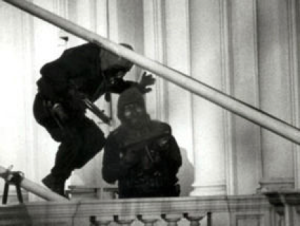 We now address the Special Forces application in intelligence. This idea of application came out recently in the operative fields, and it can be found in the recent Iraq war, with General McChrystal as the commander of JSOC (Joint Special Forces Command)[2]. The problem that his forces faced was due to the nature of Al Qaeda (AQ). The terrorist organization was not hierarchical, but it was based on relationships, shared interests, favors and horizontal structures. This system was extremely flexible and it has the ability to change on a daily basis. McChrystal understood the fundamental nature of such a network, and he reasoned “to defeat a network, you need a network”. The forces employed for countering Al Qaeda needed to renovate. JSOC had this task, but the commander knew that it would have not been enough. They actually needed a proper network of forces, actors, agencies and institutions to detect the several changes of AQ. They needed the CIA well-known ability to exploit information. Their tactic goal was to get actionable data and operate upon it in real time. In order to accomplish this goal, Special Forces were required to stay all “under one tent” (JSOC, CIA, NSA, NGIA, State Dep., etc.). McChrystal claimed “everyone talks with everyone!”. The result was a continuous flow of information among the network members, and between different levels. This “tent” connected everyone involved in the operations, such that operators on the ground had the possibility to exploit immediate actionable intelligence.
We now address the Special Forces application in intelligence. This idea of application came out recently in the operative fields, and it can be found in the recent Iraq war, with General McChrystal as the commander of JSOC (Joint Special Forces Command)[2]. The problem that his forces faced was due to the nature of Al Qaeda (AQ). The terrorist organization was not hierarchical, but it was based on relationships, shared interests, favors and horizontal structures. This system was extremely flexible and it has the ability to change on a daily basis. McChrystal understood the fundamental nature of such a network, and he reasoned “to defeat a network, you need a network”. The forces employed for countering Al Qaeda needed to renovate. JSOC had this task, but the commander knew that it would have not been enough. They actually needed a proper network of forces, actors, agencies and institutions to detect the several changes of AQ. They needed the CIA well-known ability to exploit information. Their tactic goal was to get actionable data and operate upon it in real time. In order to accomplish this goal, Special Forces were required to stay all “under one tent” (JSOC, CIA, NSA, NGIA, State Dep., etc.). McChrystal claimed “everyone talks with everyone!”. The result was a continuous flow of information among the network members, and between different levels. This “tent” connected everyone involved in the operations, such that operators on the ground had the possibility to exploit immediate actionable intelligence.
This was possible thanks to the operative structure named F3EA (Find, Fix, Finish, Exploit, Analyze)[3], which endorsed a circular way of acting and collecting information. First, intelligence analysts find the location of the target; then, drones fix the coordinates. Second, Special Forces quickly reach the target, defeat it and collect new information from enemy’s base. Special Forces can exploit the data they gathered directly on the place or communicate the data to the center of analysis, where they are rapidly processed so that new information become available and new targets can be identified in real time. This process was realized with the help of software such as Real Time Regional Gateway. The speed and efficiency of these operations allowed the involved forces to reach out dozens of targets in one night, with JSOC collecti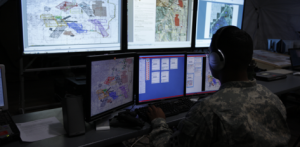 ng agents transported around by helicopters to hit always-new targets. By contrast, previous practices moved forces by using Humvees and could not reach more than few targets during one single night.
ng agents transported around by helicopters to hit always-new targets. By contrast, previous practices moved forces by using Humvees and could not reach more than few targets during one single night.
We showed only one example of deployment of Special Forces for intelligence purposes, that is, an example of a specific war and context. However, the original idea of McChrystal proved to be generalizable, and the network of different forces and agencies actually grew up, as more and more information widespread among members. The enhanced capacity to inform through links was exploited also after the Iraq’s first experience, and now the CIA-JSOC is a default choice, as we have seen in the Bin Laden’s hunt and kill scenario.[4]
We now consider the 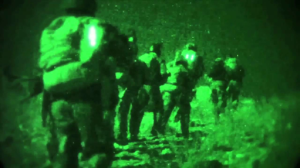 consequences of the extension of Special Forces abilities for intelligence tasks. First, we address the benefits of such an extension. A clear advantage is the massive amount of information we may collect with these extended operations, and the extreme speed and precision in targeting objectives. “Network beats network”: operators kill targets faster than they can regenerate, so that McChrystal’s plan actually succeeded. Indeed, previous plans were not able to tackle targets so quickly, and enemies could move away from the location where they were signed on data available to soldiers, becoming impossible to find. Furthermore, we are discussing about cases in which enemies are not States with structures and classified secrets. Enemies are terrorists and insurgents, and their information are unclassified, although they probably hide in denied or inaccessible areas, or unknown shelters. Thus, Special Forces had the ability to penetrate into hostile zones, disarm dangerous targets and finish them in few minutes. They become especially useful in areas where other resources are not available, for example special agents cannot penetrate the areas under cover actions, or conventional soldiers cannot operate in such complicated contexts.
consequences of the extension of Special Forces abilities for intelligence tasks. First, we address the benefits of such an extension. A clear advantage is the massive amount of information we may collect with these extended operations, and the extreme speed and precision in targeting objectives. “Network beats network”: operators kill targets faster than they can regenerate, so that McChrystal’s plan actually succeeded. Indeed, previous plans were not able to tackle targets so quickly, and enemies could move away from the location where they were signed on data available to soldiers, becoming impossible to find. Furthermore, we are discussing about cases in which enemies are not States with structures and classified secrets. Enemies are terrorists and insurgents, and their information are unclassified, although they probably hide in denied or inaccessible areas, or unknown shelters. Thus, Special Forces had the ability to penetrate into hostile zones, disarm dangerous targets and finish them in few minutes. They become especially useful in areas where other resources are not available, for example special agents cannot penetrate the areas under cover actions, or conventional soldiers cannot operate in such complicated contexts.
Then, unity of effort is a fundamental feature of a successful Counterinsurgency campaign, [5] and the shared “tent” perfectly embodies this because it realizes a unity of analysis and action formed by agencies, departments and military forces. All the parties involved work together for one common purpose, and they share information and cooperate in gathering them. Moreover, such an approach is actually suitable for a COIN wide campaign, where all the range of forces and resources should be involved in the resolution of the conflict. Indeed, Special Forces can operate to kill specific targets, while conventional army would carry on with a clear-hold-build strategy, conquering the “hearts and minds” of the local population (according to Galula’s advice to first eliminate important figures of an insurgency, and then setting up a population-centered approach)[6]. Special Forces’ few kills are better (or less bad) than bombing entire buildings, as Spec-Forces are very precise in their tasks and they generally do not produce massive side effects. Their efficient and strenuous activity can be seen as an evidence of operating security forces on the territory, and population can be positively influenced by this.
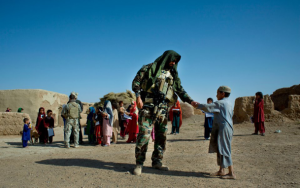 However, this approach has some problems. First, operations such as the F3EA are just tactical schemes. F3EA does not offer any strategic framework (or general and geo-political purpose), but it is just a way to integrate military and intelligence corps into battlefields. The risk is to start a circular action of targeting without any wider goals. That is why a comprehensive COIN strategy (centered on population) is needed when conducting these special operations. Without a comprehensive strategy, all the efforts in the tactical sphere of killing relevant targets would be useless, and failure is granted. If there are no ways to inform people about the support activity the Special Forces do, people will always and inevitably be scared when they see helicopter raids overnight.
However, this approach has some problems. First, operations such as the F3EA are just tactical schemes. F3EA does not offer any strategic framework (or general and geo-political purpose), but it is just a way to integrate military and intelligence corps into battlefields. The risk is to start a circular action of targeting without any wider goals. That is why a comprehensive COIN strategy (centered on population) is needed when conducting these special operations. Without a comprehensive strategy, all the efforts in the tactical sphere of killing relevant targets would be useless, and failure is granted. If there are no ways to inform people about the support activity the Special Forces do, people will always and inevitably be scared when they see helicopter raids overnight.
Nevertheless, some other relevant issues on the transferring of tasks from intelligence services to military forces can be traced here.[7] The CIA’s secret way of acting has always had some positive impact on its job. CIA has always been more flexible and faster compared to regular military corps. Therefore, the tasks transferring between forces would negatively affect and show down the covert actions performed by Spec-Forces. There are also concerns about the agencies’ diminished autonomy in the case some of their competencies are transferred to military personnel. Intelligence operators would request their own private (and classified) resources, and would not like if someone else could get access to them, ruining the privileged and precious links agencies have on the territory. Furthermore, a clarification of roles would be required, alongside with a renewed training program for Special Forces, when they would be involved in intelligence activities, covert actions, and other missions that likely are prerogative of agencies clandestine services. Obvious risks would arise since legal issues can occur in the case of captures of operators, which legally work non-clandestinely and usually wear uniforms (or at least they should). Special intelligence agents have special covers and the government can avoid encountering awkward situations in many cases. However, if soldiers are employed in such scenarios, consequences may likely be different from usual situations where tasks are assigned to intelligence services. Even giving too much secret power to military forces can put forces in a situation that is difficult to manage properly.[8]
In sum, the employment of Special Forces in intelligence tasks and data gathering has been proved effective and useful in contemporary warfare scenarios. Moreover, McChrystal’s idea is strong in a (social) world composed of networks and unconventional contexts and enemies. The application of that seminal idea promises a renewal of forces and helps the sharing of information among different members of the same group. However, there are certain risks and problems that can occur from such a deployment. Thus, leaders and generals should be careful and should try to minimize any possible negative outcome.[9] They should never miss to enforce a whole COIN or comprehensive campaign, which in turn would deal with the strategic aspects of the war. Doing this, they would not fall into the mistake of concentrating their efforts only in the tactical choices, which alone do not ensure the victory.[10]
References
- Ackerman S., “How special ops copied Al-Qaida to kill it”, Wired, 2011, September 9.
- Best R. A. and Feickert A., “SOF and CIA paramilitary operations: issues for Congress”, CRS Report for Congress, 2006, December 6.
- Burke J., “Osama bin Laden: the long hunt”, The Guardian, 2011, May 2.
- Galula D., Counterinsurgency Warfare: Theory and Practice, Praeger Security International, Westport, 1964.
- Gomez J., “The targeting process: D3A and F3EAD”, Small Wars Journal, 2011, July 16.
- Hughes C., “Shadowy American Special Forces Unit sent to take out al-Qaeda’s network”, Daily Mirror, 2011, May 5.
- Jennifer D. K., “Covert action and the Pentagon”, in Andrew C., Aldrich R. J. and Wark W. K. (ed.), Secret Intelligence: a Reader, Routledge, New York, 2009, pp. 439-454.
- JP 3-05, Special Operations, 2014, July 16.
- JP 2-0, Joint Intelligence, 2013, October 22.
- Kilcullen D., “Counterinsurgency redux”, Survival: Global Politics and Strategy, 2006, 48:4, pp. 111-130.
- McChrystal S., “It takes a network”, Foreign Policy, 2011, February 21.
- Petraeus D., “How we won in Iraq”, Foreign Policy, 2013, October 29.
- Roggio B., “Full text of Gen. Petraeus’ testimony to Congress”, Long War Journal, 2011, March 15.
- Tovar B. H., “Intelligence assets and special operations”, in Barnett F., Tovar B. H. and Shultz R. (ed.), Special Operations in US Strategy, National Defense University Press, Washington DC, 1984, pp. 167-190.
[1] JP 3-05, Special Operations, 2014, July 16.
[2] McChrystal S., “It takes a network”, Foreign Policy, 2011, February 21.
[3] Gomez J., “The targeting process: D3A and F3EAD”, Small Wars Journal, 2011, July 16.
[4] Burke J., “Osama bin Laden: the long hunt”, The Guardian, 2011, May 2.
[5] Kilcullen D., “Counterinsurgency redux”, Survival: Global Politics and Strategy, 2006, 48:4, pp. 111-130.
[6] Galula D., Counterinsurgency Warfare: Theory and Practice, Praeger Security International, Westport, 1964, p. 75-76.
[7] Jennifer D. K., “Covert action and the Pentagon”, in Andrew C., Aldrich R. J. and Wark W. K. (ed.), Secret Intelligence: a Reader, Routledge, New York, 2009, pp. 439-454.
[8] The arguments listed here are taken from the chapter 25, contained in the Routledge’s book Secret Intelligence by Jennifer Kibbe. The author offers detailed reasons to doubt about the transferring of secret services competencies to the military forces. I invite the reader to deepen the case through the reading of the original source.
[9] Petraeus D., “How we won in Iraq”, Foreign Policy, 2013, October 29.
[10] Petraeus D., “How we won in Iraq”, Foreign Policy, 2013, October 29.




Be First to Comment